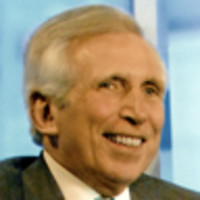
Barack Obama has “enjoyed substantially more positive media coverage than either of his two predecessors,” according to the analysis of the Pew Research Center’s Project for Excellence in Journalism. That is not really surprising. Bill Clinton’s early months were chaotic, mainly because his White House staff was weak and his personality, while engaging, was, well, untidy. George W. Bush scrambled into office after a contested election that left more than a residue of bitterness and fatigue all around. A better measure of comparative coverage for Obama so far is with Ronald Reagan. Both administrations were/are led by charismatic and popular men with a clear vision that sharply differs from the presidents they replaced, who were from opposing parties and left economies in a mess and crises in Iran and Afghanistan.
The Obamas are dignified but cool and contemporary, in sync with the cultural touchpoints of the people who cover them.
To get a sense of how the coverage stacks up, I reached Sam Donaldson, ABC’s superb and irrepressible Reagan-era White House correspondent—who has, I gather, just signed a new contract—and The Washington Post’s great White House team of Lou Cannon and David Hoffman.
Their comments and the recollections of other White House watchers whose memories span the decades conclusively support the sense that Obama is getting more favorable press than Reagan did in the same period, with one big caveat. Only 70 days after his inauguration, Reagan survived an assassination attempt that lodged a bullet one-quarter of an inch from his heart. Reagan’s gallantry (“Honey, I forgot to duck,” he quipped to Nancy Reagan) sent his popularity soaring, wiping out grumbles about the Reagans’ imperial style and limning the policy debates for a time.
But overall, Reagan’s “honeymoon” was mainly with the voters who gave him a landslide victory. Reporters for the major print and broadcast outlets—their dominance of the news agenda was far greater than it can be in today’s blog and bloviation culture—approached the new administration with ingrained skepticism, although there definitely were murmurings of untoward deference, as there are now. Donaldson emailed me from his New Mexico ranch that, for all the assets of personality that Reagan shared with Obama, many reporters tended to accept the late Democratic Party savant Clark Clifford’s dismissal of Reagan as an “amiable dunce” whose “age put him out of touch with new social trends and ideas whereas the youthful Obama is seen as smart and ‘with it,’ characteristics that appeal to reporters.”
Reagan’s policies in most areas, Donaldson wrote, appealed less to the natural instincts of reporters than Obama’s do: “Reagan was seen as a hide-bound, cold-warrior conservative while Obama is seen as a moderate liberal, open to policy innovation whose flexible approach to problems is more realistic in today’s world.”
As for style, Reagan’s White House veered toward grandeur, with a distinct preference for buttoned-up staff and elite entertaining. By contrast, the Obamas are dignified but cool and contemporary, in sync with the cultural touchpoints of the people who cover them. Finally, in Donaldson’s view, Reagan was an establishment figure whom reporters were expected to treat with respect (one of his first press initiatives was to impose decorum on press conferences; no waving of hands for attention), whereas Obama manages to seem casual and aloof, which gives the impression of informality that is, in fact, highly disciplined.
Cannon, who became Reagan’s premier biographer, and Hoffman, who is about to leave his position as assistant managing editor for foreign news at The Washington Post, essentially would agree with Donaldson. But they place greater emphasis on changes in the way White House reporting works, a result of the increasing sophistication of spin and greater control over the access that enabled deeply reported stories about process.
Cannon, Hoffman, and their peers would write regular “tick-tock” stories that diagrammed decision-making, including internal dissension and discrepancies. Clearly, some of that kind of reporting happens now, they say, but the barriers that surround senior officials are more formidable than they used to be, and it is harder for reporting to break through the accompanying chatter of cable-television and Web-based commentary.
All these masters of the journalism arts agree that Obama is as accomplished a political figure as they’ve ever seen and, as the first African-American president, has an advantage of goodwill that transcends policy. Moreover, reporters are still coming to terms with a president as skilled at handling the egos and inevitable turf battles that surround him as Obama has turned out to be.
The verdict on Reagan as “the great communicator” and as one of the most successful presidents of the 20th century in political terms is a retrospective one. While in office, he endured a number of significant downdrafts; during the recession of 1982, for example, when his poll ratings sagged, and later in the Iran-Contra scandals of his second term. So far, Obama largely has glided through the crises and challenges at hand, and he says he’s done reasonably well in accommodating the media, with the exception of Fox News.
“I’ve got one television station entirely devoted to attacking my administration” he said on CNBC, “that’s a pretty big megaphone.”
But reporters are neither comfortable nor accustomed to being seen as enamored of the White House. I side with the other old hands who expect things to get tougher for Obama over time, almost no matter what happens, and share the belief that scrutiny of the president benefits him and us by piercing the armor that so often turns leadership into arrogance.
Peter Osnos is a senior fellow for media at The Century Foundation. Osnos is the founder and editor at large of PublicAffairs Books. He is vice chairman of the Columbia Journalism Review, a former publisher at Random House, and was a correspondent and editor at the Washington Post.

